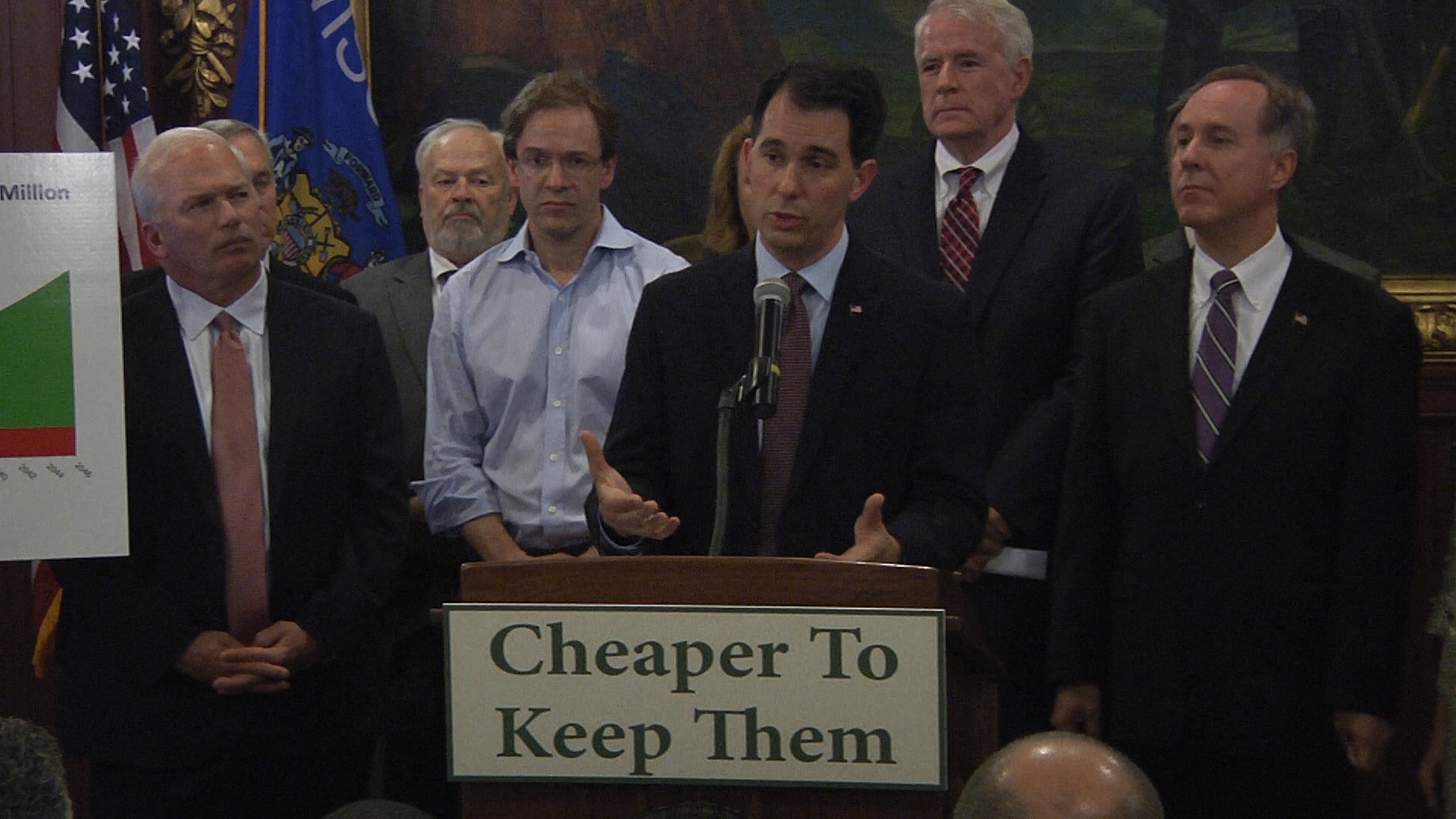
June 30, 2015
[Madison, Wisc…] Details of the proposal for a new Bucks arena in downtown Milwaukee were released on Monday, and an analysis by the non-partisan Legislative Fiscal Bureau (LFB) highlighted some bad news for supporters of the plan: it might not be cheaper to keep the Bucks in Wisconsin.In early June, Gov. Scott Walker, Milwaukee Mayor Tom Barrett, Milwaukee County Executive Chris Abele and legislative leaders announced a plan that would have the public cover half of the upfront cost of a new arena. The other half – $250 million – would be paid for by the Bucks current and former owners.
The $250 million covered by taxpayers inflated to about $400 million once interest on bonding was considered, according to the Milwaukee Journal Sentinel. Even with this high cost to taxpayers, the bipartisan coalition argued at their previous press conference that it was still indeed “cheaper to keep them.”
The coalition argued that if the Bucks left Wisconsin, the state would lose $419 million over the next 20 years – $130 million in income tax revenue, $169 million in growth of income tax revenue and $120 million for the cost of the Bradley Center over the next 10 years.
When compared to the $400 million anticipated cost calculated in early June, it would have been cheaper to keep the Bucks.
However, that number took a hit on Monday when the Fiscal Bureau memo revealed it would in fact cost the public $443 million to build the arena – $24 million higher than the cost to let the team leave.
According to LFB, the Wisconsin Center District (WCD) would bond $203 million, which would be paid back over 20 years by the state, county and taxes collected by WCD. With interest, the total cost to taxpayers would be $377 million.

In addition, the state would be on the hook for $10 million to retire financial “obligations and any contractual liabilities” for the Bradley Center. The state would also bond another $6 million over the next two years for maintenance and repair projects at the Bradley Center – the current Bucks arena that would be demolished if the Bucks stay in Wisconsin.
On top of the state and county contributions, the City of Milwaukee would contribute $47 million in the form of a Tax Incremental Financing district and a parking structure.
Supporters of the plan will argue that it is the state that would be losing the $419 million in revenue – about $21 million a year – so it would still be cheaper to keep them because the state’s portion is only $80 million.
That ignores the rest of the taxpayers, though. To have a real conversation on the arena, the cost to city, county and state taxpayers needs to be taken into consideration. When that occurs, the argument that it is “cheaper to keep them” simply falls apart.
Plus, if the Bucks leave, people will not cease spending money on entertainment. Their money will just go toward a new venue – instead of the Bucks, folks will find new places to spend their disposable income.
Other aspects of the proposal for a new arena include a provision that would keep the state from paying their portion until the city contributes its share; a plan to extend the current WCD taxes on food and beverage, vehicle rentals and hotel rooms indefinitely; and that the Bucks lease the arena for 30 years.
Along with the 30-year lease, the Bucks would be entitled to receive all revenues related to the operation or use of the arena, “including but not limited to ticket revenues, licensing or user fees, sponsorship revenues, revenues generated from events that are held on the plaza that is part of the sports and entertainment arena facilities, revenues from the sale of food, beverages, merchandise, and parking, and revenues from naming rights.”
The full analysis from the Legislative Fiscal Bureau is available by clicking here.
If legislators are truly looking to make it cheaper to keep the Bucks, the MacIver Institute recently suggested three ways they could bring down costs for taxpayers. Now might be a good time to take those into consideration.